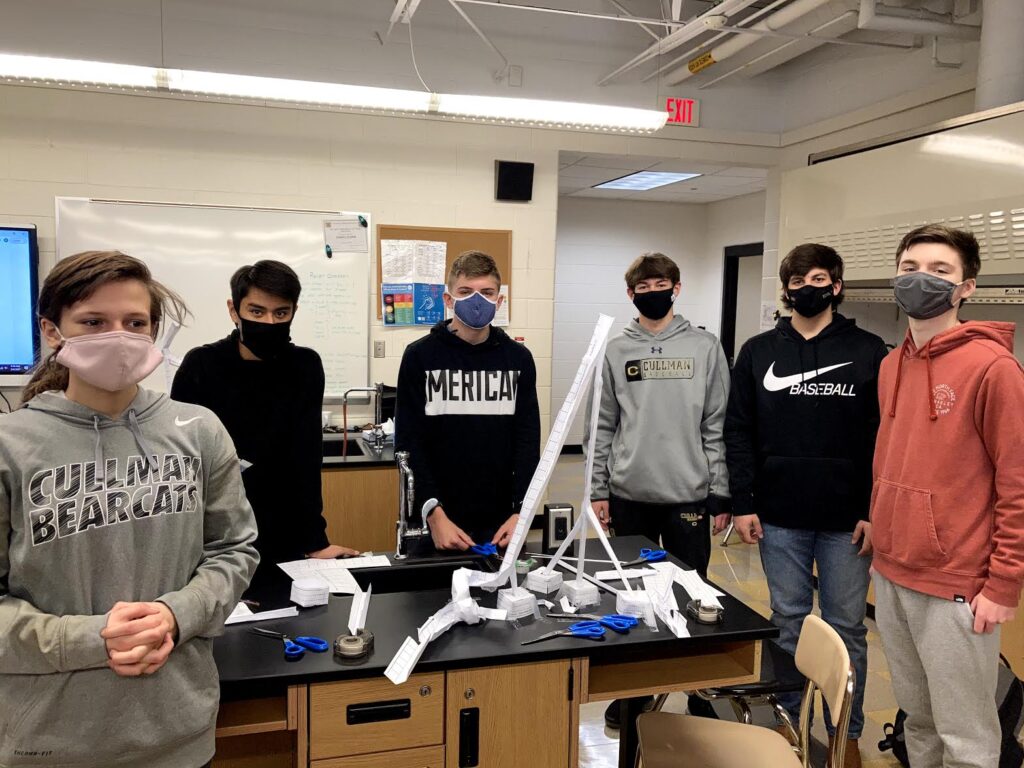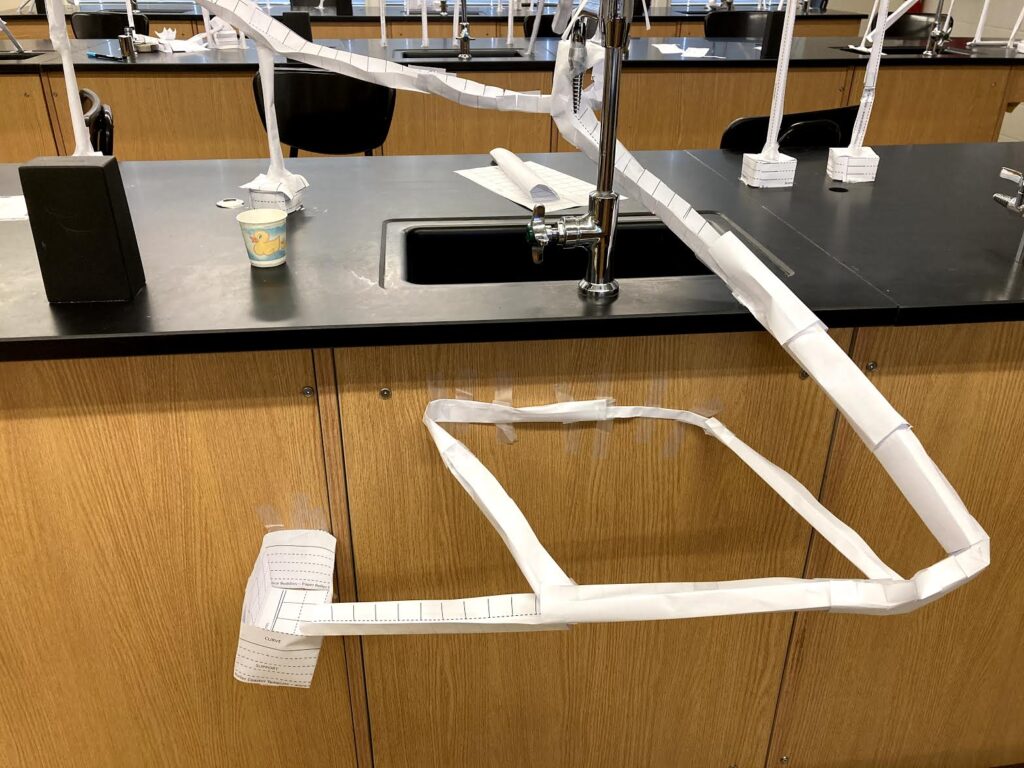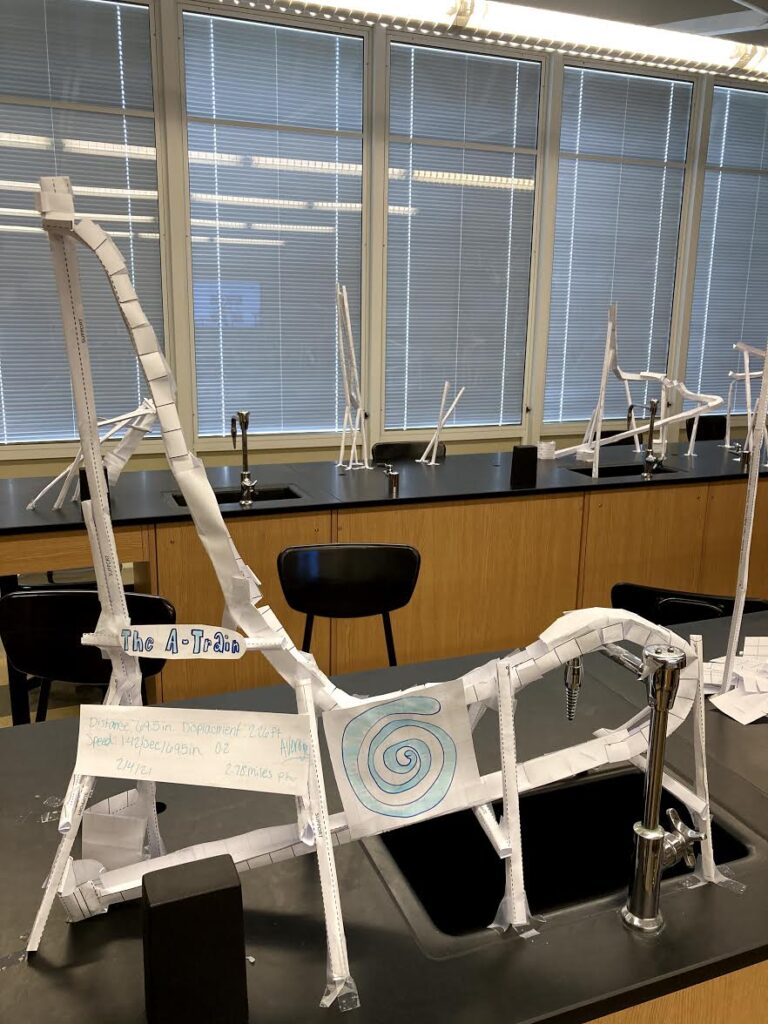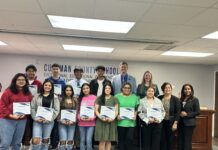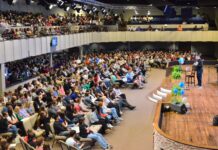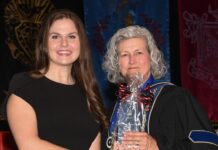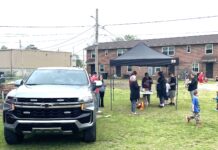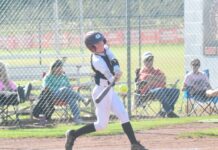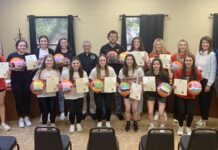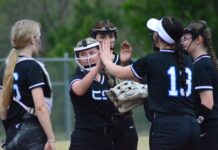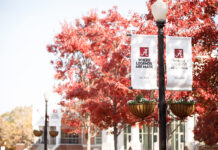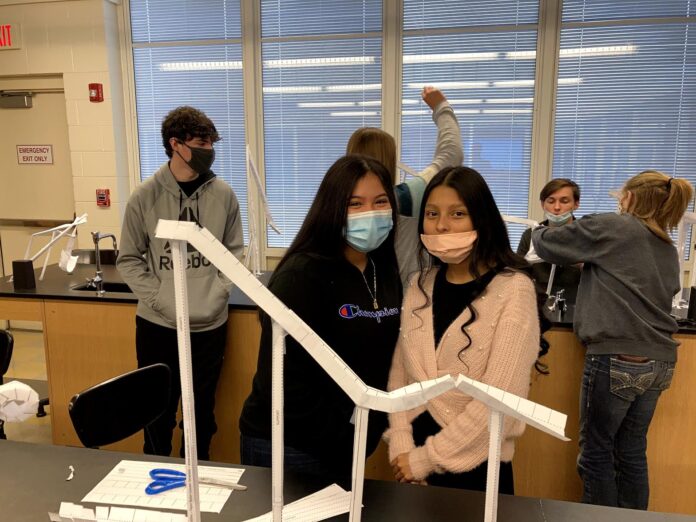
CULLMAN, Ala. – What better way to learn about the mechanics of speed and velocity than by calculating it out with a room full of tiny roller coasters? That’s the approach being taken at Cullman High School this year as part of the 2021 science curriculum, with students designing and creating tiny, paper roller coasters to game out those concepts in real life.
Science teacher Daniel Guinn recently tasked students with crafting paper roller coasters for marbles, with students provided the paper templates for loops, curves, hills and supports. Each class constructed a handful of coasters, with more than 20 total making up a tiny theme park in Guinn’s classroom.
“We built the paper roller coasters to gain hands-on experience calculating speed or velocity,” Guinn said. “Students learned the difference between distance and displacement. They had the opportunity to see how real-life amusement parks can place really long rides in such a relatively small area by reducing the displacement.”
By building their own coasters, students were able to calculate the average speed of the marble traveling down the track, while others calculated the top speed of their tracks. The longest coaster at the moment measures just over 8 feet, while the top speed currently clocked for a marble coming in around 8 mph.
“A friendly competition was created between each class to promote creativity,” Guinn explained. “Points were awarded for each hill, loop and curve. Additional points were awarded to the group whose coaster had the shortest displacement, longest distance or highest average speed. There were many very creative roller coasters and several groups were quite ambitious with their designs.”
Though creating a thrill ride coaster is fun, Guinn noted it has also been a great way to get students to think differently about the science they’re learning in the classroom. It’s also been one of the few hands-on projects they’ve been able to pull off this year, due to the pandemic.
“The students were very excited for this project and I’m so glad they enjoyed it,” he said. “This semester we’ve used a lot of online simulations, since they’ve been limited in the hands-on activities due to the COVID restrictions. Thankfully we were able to keep our distance with this project while working together to design, build and collect data. The students loved when the coasters came together.”
The roller coasters will also come in handy later in the semester, where they’ll be used again to teach students about kinetic and potential energy.
